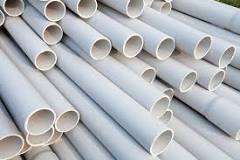Dec . 14, 2024 19:40 Back to list
Comparing PVC and PPR Pipes for Various Applications and Services
PVC Pipe vs. PPR Pipe A Comprehensive Comparison
When it comes to plumbing and piping systems, two of the most commonly used materials are Polyvinyl Chloride (PVC) and Random Copolymer Polypropylene (PPR). Each of these materials has its unique characteristics, advantages, and disadvantages, making them suitable for different applications. In this article, we will explore the properties of PVC and PPR pipes, their advantages and disadvantages, suitability for various applications, and overall performance.
Characteristics of PVC Pipe
PVC pipe is a popular choice for various plumbing applications, particularly in residential and commercial construction. It is made from a synthetic plastic polymer known for its durability, lightweight nature, and resistance to corrosion. PVC pipes are commonly used for drainage, waste management, and plumbing applications due to their low cost and ease of installation.
Advantages of PVC Pipes
1. Cost-Effective PVC pipes are generally more affordable compared to other materials, making them an attractive choice for budget-conscious projects.
2. Corrosion Resistant Unlike metal pipes, PVC is not prone to rust or corrosion, extending the lifespan of the plumbing system.
3. Lightweight PVC pipes are significantly lighter than metal pipes, making them easier to transport and install.
4. Smooth Interior The smooth surface of PVC pipes reduces friction, allowing for better water flow and minimizing blockages.
5. Chemical Resistance PVC is resistant to many chemicals, making it suitable for transporting various fluids.
Disadvantages of PVC Pipes
1. Temperature Limitations PVC pipes can warp or deform if exposed to high temperatures. They are generally not suitable for hot water applications beyond 60°C (140°F).
2. Brittleness PVC can become brittle over time, especially when exposed to UV light without proper protection.
3. Environmental Concerns The production and disposal of PVC can have negative environmental impacts due to the release of harmful chemicals.
Characteristics of PPR Pipe
PPR pipes are made from a type of polypropylene, known for its high resistance to heat and pressure, making them ideal for hot and cold water supply systems. PPR pipes are increasingly being used as an alternative to PVC and copper pipes in modern plumbing applications.
pvc pipe vs ppr pipe service

Advantages of PPR Pipes
1. Heat Resistance PPR pipes can withstand high temperatures, making them suitable for hot water applications (up to 95°C or 203°F) without deforming.
2. Durability PPR is known for its long lifespan and can last over 50 years under optimal conditions.
3. Chemical Resistance Similar to PVC, PPR pipes resist a wide range of chemicals, making them versatile for different applications.
4. Low Thermal Conductivity PPR pipes have a lower thermal conductivity than metals, helping to maintain water temperature in both hot and cold applications.
5. Joint Fusion PPR pipes can be joined using thermal fusion, creating a seamless, leak-proof joint that enhances system integrity.
Disadvantages of PPR Pipes
1. Higher Initial Cost Compared to PVC, PPR can have a higher upfront cost, which may deter some consumers.
2. Installation Skills Required The fusion jointing method requires skilled professionals and specialized equipment, which may increase installation costs.
3. Limited Availability In some regions, PPR pipes may not be as readily available as PVC, complicating procurement.
Applications and Suitability
Both PVC and PPR pipes have their specific applications.
- PVC Pipes Ideal for drainage systems, sewer pipes, irrigation systems, and vent systems. They are generally not recommended for high-temperature or pressurized applications.
- PPR Pipes Better suited for hot and cold water supply systems in residential and commercial buildings, as well as in central heating systems.
Conclusion
When choosing between PVC and PPR pipes, the decision should be based on the specific requirements of the project. PVC offers a cost-effective solution for low-pressure, cold water applications, while PPR provides superior performance for high-temperature and pressure applications. Understanding the properties, advantages, and disadvantages of each type of pipe will help consumers and contractors make informed choices that best suit their plumbing needs. Ultimately, the right piping system can enhance the durability, efficiency, and safety of the plumbing infrastructure.
-
Durable DN500 HDPE Double Wall Corrugated Drain Pipes
NewsAug.06,2025
-
32mm HDPE Pipes Coil: Durable & Flexible Water Supply
NewsAug.05,2025
-
DN100 PVC Well Casing Pipes | Durable Corrosion-Proof
NewsAug.04,2025
-
HORON 25mm PPR Plumbing Pipes - AI-Enhanced & Reliable
NewsAug.03,2025
-
HORON 25mm PPR Pipes - AI-Optimized Plumbing Excellence
NewsAug.02,2025
-
Premier HDPE Sprinkler Pipe Manufacturers | Durable Solutions
NewsAug.01,2025

